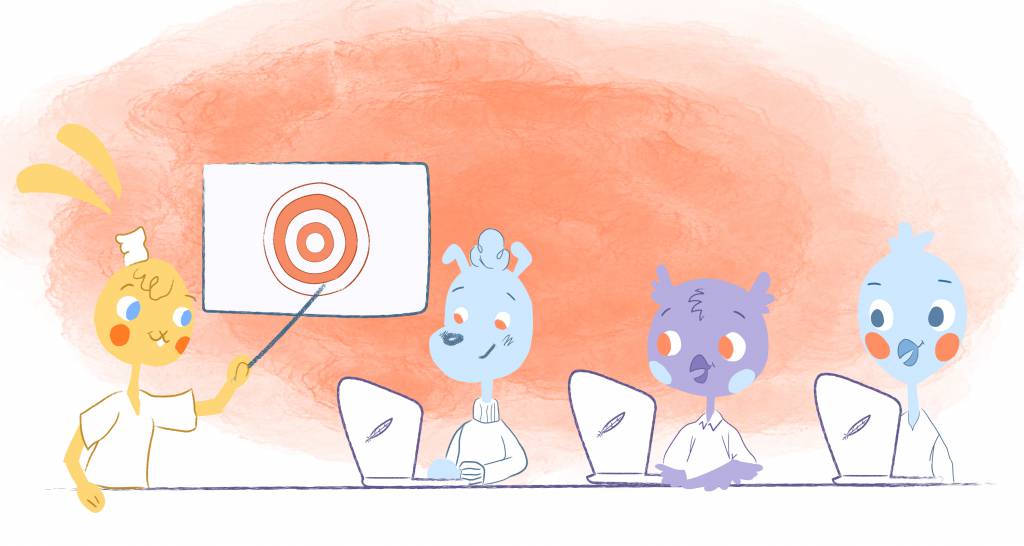

Are you encountering meeting mortification? There are ways to tweak the day and time of your meetings to make a meeting marvelous — or at least productive and bearable.
When it comes to efficiency and productivity — time is everything.
When it comes to meetings, the one thing you’ll want in every meeting is efficiency. Of course, it’s necessary to handle your meetings in a professional manner, but the time you hold it is almost as crucial to success.
When is the optimum time to schedule a meeting?
Let’s look into the ideal time and day for a meeting for your company. The general consensus is that the best time of day for meetings in business is between 10 a.m. and 2 p.m.
If a typical workday lasts from 9:00 a.m. to 5:30 p.m., the day is divided into two halves. The schedule is basically the same in every office.
Earlier in the day, 9 –10 a.m.
10:00 a.m. – 12:00 p.m.
Lunchtime; 12–1 p.m. – Lunch break
Afternoon; 1 p.m. – 3:30 p.m.
Afternoon/Evening — late afternoon/early evening; 4 p.m. and forward
This leaves you with five-time periods to choose from.
So, seeing this schedule at a glance — what are the advantages and disadvantages of each timeframe?
The early bird
Early in the A.M. — Having a meeting first thing at first light might be beneficial if you want to be quick. Power people and very busy CEOs often want this time for their meetings. A fast 15-minute stand-up meeting or a quick check-in is best done early in the morning.
On the other hand, early morning meetings should be avoided for some types of employees, such as graveyard employees, since those workers may still be tired. In addition, you don’t want to spend time repeating yourself or waiting for someone to return from the coffee machine.
Teach your employees to prepare the day before
Meetings at the start of the day require employees to prepare the day before or arrive early. As most tech businesses get going early — you can teach your employees to better navigate this world by showing them how to set plans and goals — prepare the night before.
If you have given leeway during covid for your staff to start at various times of the day, getting everyone in the same room at the same time to start the meeting might be challenging. Get everyone back on the same schedule, if you can, for success.
Many employers have found that mid-morning meetings are more productive since the change from home to the office. In addition, if you use mid-morning meetings, often employees have had time to settle in, and they aren’t in the flow yet. In this case — mid-morning meetings tend to be more productive. Around 10 or 11 a.m., flexibility also seems to increase.
Some workers don’t want to spend time in a meeting shortly before lunch because they believe you will drag on and they’ll be late for lunch plans. So always start and end meetings on time.
How about a lunch meeting?
Lunchtime/Lunch break: Meeting timings are often influenced by mealtimes, so grabbing and paying for your employees’ lunch can be a great week to connect. If you’re holding a conference during a meal, plan on supplying the food — and let that be known.
Employees will feel more productive and invigorated if they are given some beverages or little snacks, even if it isn’t a full dinner. Still, a lunch meeting with great food can also go under the team-building budget for your dollars. In addition, these meetings bring your team closer together as they talk with each other before and after the meeting.
Afternoon: Employees are generally lethargic soon after lunch, but by three p.m., the energy picks up. I used to have a boss that always said, “Every person caffeinated, and we’ll meet in the conference room in twenty minutes.”
The vote by workers is that they are far more inclined to accept meetings after three p.m. than early morning. As a result, they’ll be more enthusiastic and have had more time to think about and prepare for the pow-wow.
A three p.m. meeting allows you and your colleagues more breathing space than a nine a.m. conference, which you must attend as soon as you get to work. Note though that for your three p.m. meetings — most of the day is passed, so your participants leave straight after the meeting.
This meeting is not for you if you have a team that works late and gets a lot done.
Never too late for a meeting
Late Afternoon/Evening Meetings: During late afternoon or evening conferences, workers may watch the clock tick and wonder when the day will conclude. If the purpose of your meeting is to increase employee passion for something, the enthusiasm will fade as the person approaches the conclusion of their workday.
Following an examination of the five time blocks in a research done by Keith Harris of WhenIsGood.com, — he said that he discovered the ideal time for a conference seemed to be about three p.m. (afternoon), even if you live in the metaverse.
By three p.m., employees have completed most of their tasks, had a meal, and regained their energy.
Three p.m. is break time. Everyone knows that. So offer snacks and beverages if you’re meeting at that time. Otherwise, food is a distraction.
Monday is the best day of the week for a conference type meeting
Let’s move on to the best day of the week to have a meeting now that we’ve discussed the optimum time. Because workers may utilize personal or vacation days to have a three-day weekend, Mondays and Fridays are typically the least productive days for holding meetings.
On Monday, employees are often still in a weekend mood and ready to leave the workplace on Friday. Yet, you must consider that sometimes your Monday meetings get your team all there and revved up for work. If planned correctly (not last-minute role call), this MO can be motivational and productive.
Days and daze
Some offices claim that conferences should be held in the middle three days of the workweek to maximize productivity and participation. However, the most significant days for conferences are the middle three of the week, and the afternoon is the optimum time for a meeting.
So, when is the best time to conduct a conference throughout the week?
According to a recent survey conducted by the meeting scheduling service WhenIsGood — the optimal time for most of their workers and respondents is Tuesday at three p.m.
While Tuesday was the favorite day in that study — it may not be for you. So if you have a real go-getter team that isn’t afraid to talk meetings and productivity — send out a survey.
Choose the day that resonates most with you and your staff, no matter what your preconceived notions turn out to be.
[Related: How to Cut Meeting Times]
Image Credit: Fauxels; Pexels; Thank you!











Choncé Maddox
Choncé Maddox is a professional writer who recently left her job in the web design industry to produce killer content and manage her own writing business full time. She is passionate about helping entrepreneurs be more productive and create a life they love by doing fulfilling work. On the side, she runs a podcast and blogs about getting out of debt at MyDebtEpiphany.com.